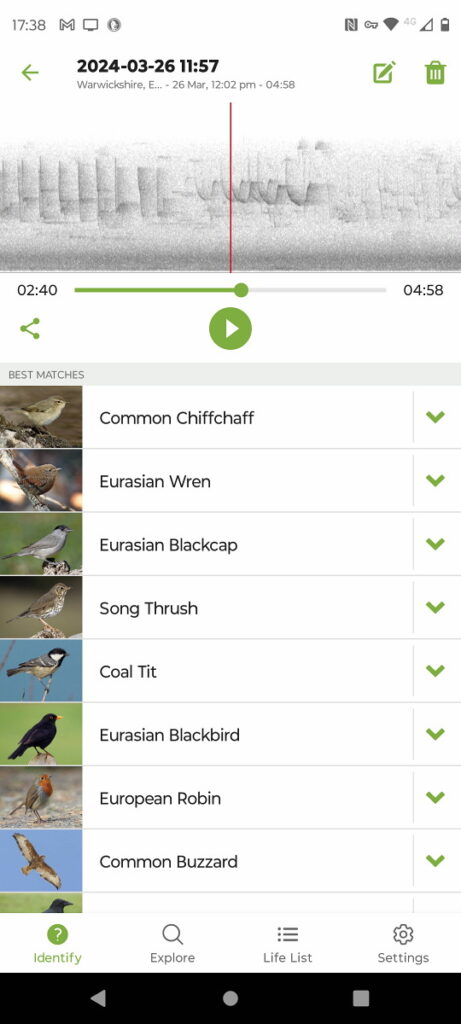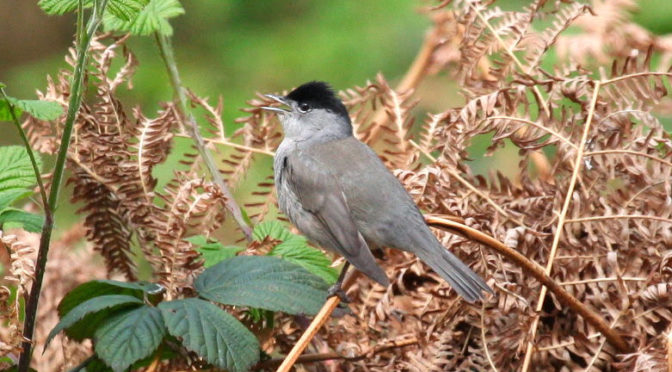I’ve been making more use of a bird recognition app and been rather impressed by it. It’s called Merlin and produced by Cornell Labs in the USA. It has three of ways of helping to identify a bird: one is by asking questions about the bird you’ve just seen, and one by image recognition from a photo you’re lucky enough to have (don’t bother trying this with your phone camera!). For me the most impressive is by sound. Click on “Sound ID”, hold your phone up and see what it finds.
The other morning I tried this in the wood. As Merlin identifies a bird, its name appears on the list on the screen, and as more are heard they are added. If a bird is heard again, its name is highlighted and brought to the top of the list. So the list is constantly shuffling as birds and heard and reheard. It’s quite fascinating to watch, and pretty impressive since the birds are not conveniently singing or calling separately, but all mushed together.
It identified all the birds I could hear, and some that I couldn’t. There was the odd snatch of a distant Green Woodpecker that it missed, but it probably wasn’t long enough to be detected. I didn’t hear a Coal Tit, Long-tailed Tit or Siskin which appeared on the list. It’s right to be cautious because it’s not infallible, but these birds are around and I’ve not reason to think that Merlin got this wrong. The Siskin was unexpected. I was slightly skeptical about this one (perhaps because I’ve personally not seen one for some years), but it kept highlighting it, convincing me that it was really there and not just a one-off mistake.
 (Some birds, including the Siskin, are scrolled off the bottom and don’t show here.)
(Some birds, including the Siskin, are scrolled off the bottom and don’t show here.)
But one thing occurred to me about these birds I didn’t hear; perhaps it wasn’t that I didn’t hear them, but I couldn’t hear them. When I was young (hard to believe I know), I had pretty perfect hearing, just as children normally do. I could hear bats squeaking at night, and the whistle of the HT cathode ray tube in our TV (younger people may need to look that up) – something that irritated me but no-one else in our house could hear it. Fast forward 60 years and my upper register has gone from around 16 kHz to about 4 kHz, meaning that I can no longer hear things like grasshoppers, crickets – and high pitched birds, like Goldcrest, and probably Coal Tit, Long-tailed Tit and Siskin.
So Merlin is bringing me an added benefit – hearing birds that I can’t. Who would have thought it?
Chris


Wonderful app. I love it. My hearing is not as good as it used to be.